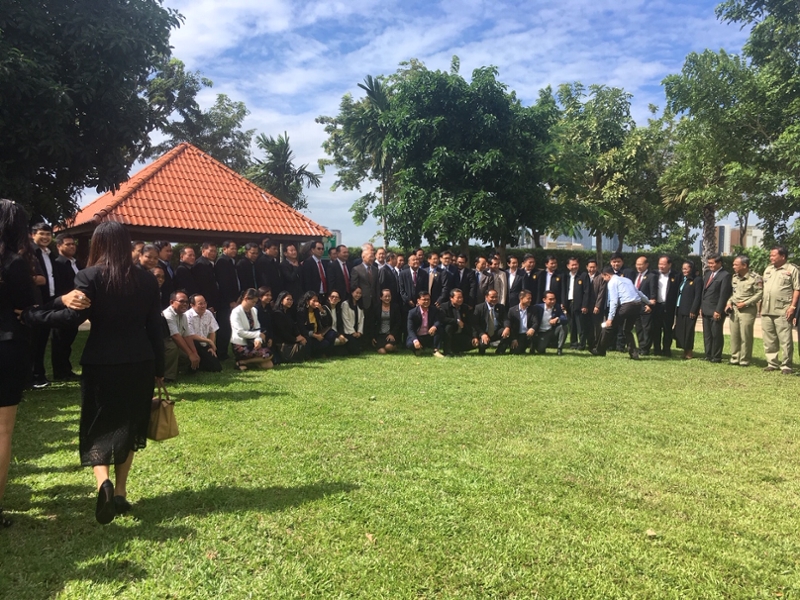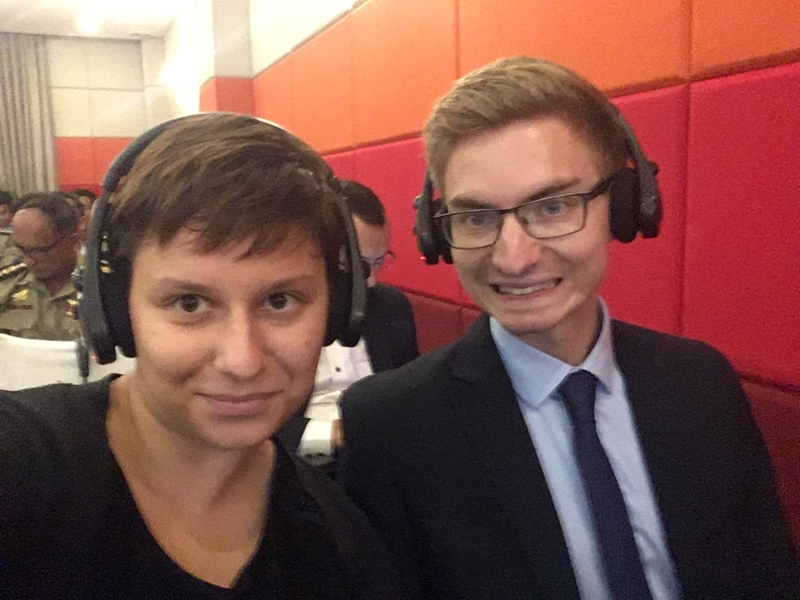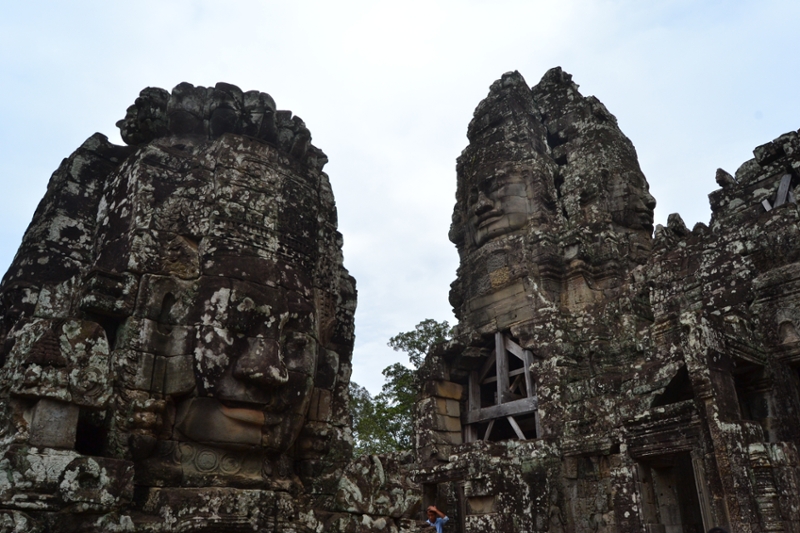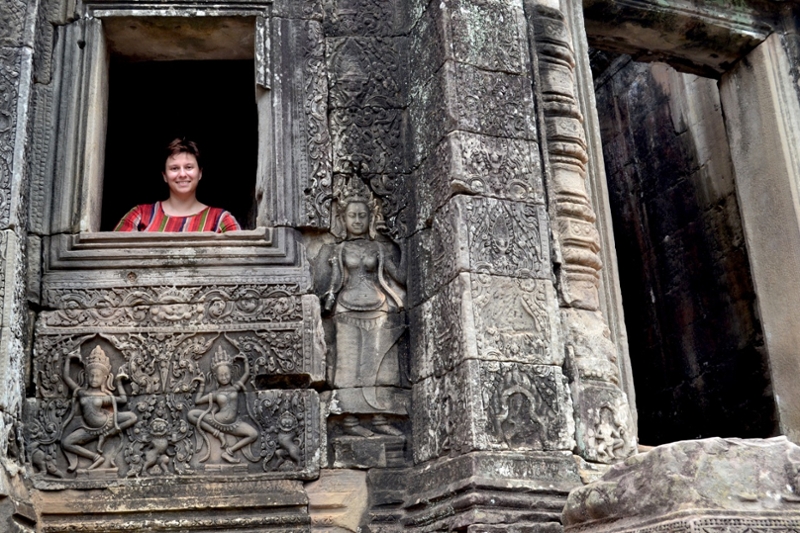Week 6: Justice System Conference; Angkor Wat
On Thursday and Friday, June 27 and 28, I attended the National Conference on Communication within the Justice System, hosted by the Office of the High Commissioner for Human Rights in conjunction with the Ministry of Justice. The conference aimed to encourage cooperative problem solving on issues faced by courts, prisons, and legal service providers. Simon and I had been invited along with IBJ Cambodia Country Director Ouk Vandeth, who would speak on a panel about case management. Other panels covered prison transfers and alternatives to incarceration.

A group picture of the conference attendees on the grounds of the venue
Participants—including judges, prosecutors, justice department administrators, prison officials, and civil society organization representatives—had opportunities for group discussion on each topic. Moreover, lunch and coffee breaks offered a less formal atmosphere to connect. While at the conference, we spoke with representatives from the International Red Cross Mission to Cambodia, Legal Aid Cambodia, and Konrad-Adenauer-Stiftung. Almost everyone in attendance was Cambodian; unfortunately my ten or so words of Khmer did not allow me to communicate with many participants outside of the CSO contingent. Nevertheless, a simultaneous-translation headset meant I could understand panel contributions in real time, and follow the detailed questions and comments on each topic.

Me and Simon with our simultaneous-translation headsets
Several big issues emerged during the conference. The first, most pressing issue is prison overcrowding. In recent years, Cambodia’s prison system has reached 206% capacity. Meanwhile, the number of detainees continues to increase as more and more people are arrested on drug-related charges. Four other issues all contribute to the problem: a backlog of cases, an inefficient documentation system, a lack of transportation options for prisoners to attend proceedings, and few alternatives to imprisonment.
Strategies proposed for affecting change were often surprisingly straightforward. For example, a lawyer in attendance suggested that judgements should be made available online. A prison director said that the government should provide each prison with a car for transfers. But even simple, sensible solutions can be difficult to achieve without the proper logistical framework. Right now there is no online database system for cases whatsoever. Paper files are transferred with the prisoner, or sometimes not at all. And the transfers have been occurring on motorbikes that break down along the way. A fairer and more efficient justice system is possible in Cambodia, but getting there will take time and commitment.
Commitment is a lifestyle for IBJ Country Director Ouk Vandeth. He was 20 years old when the Khmer Rouge came to power, and survived the genocide by lying about his education. After serving in the military and the national police, Mr. Vandeth decided to become a lawyer. He explained to me that his decision was driven by a desire to understand right from wrong in an objective context, free of constraint by tradition. When Karen Tse came to Cambodia in 1994, Mr. Vandeth was one of only 10 lawyers in Cambodia. As funders began to withdraw from the Cambodian judicial system, he would not let the IBJ Cambodia office shut down. Now, he takes several cases per month and runs the office with a barebones staff. Mr. Vandeth spoke about case management at the conference, but the participants should learn from him what it means to really strive for justice in Cambodia.
The Temples of Angkor Wat
On the weekend, my roommate Anna Nicholson and I traveled to Siem Reap. It was my first time visiting the incredible temples at Angkor Wat. My favorite by far was Bayon, the temple with towers depicting the face of Khmer King Jayavarman VII. We learned about Khmer history from our tour guide, who explained how Hinduism and Buddhism respectively went in and out of favor until Jayavarman VII incorporated elements of Hinduism into Buddhism, essentially creating a hybrid religion; on the towers of Bayon, his face represents god. Our guide also told us about how the Khmer and Cham people fought for dominance in the region, pointing out depictions of battles carved on the temple walls. I was amazed at the artistic and architectural achievement demonstrated by the temples, which reminded me of the grand castles and cathedrals of Europe, but are actually several hundred years older. Now I understand why the flag of Cambodia has the three towers of the entrance gate to Angkor Wat on it. As a symbol of cultural achievement, nothing could be better than an actual wonder of the world.

The famous main temple, Angkor Wat

Many faces of Jayavarman VII at Bayon Temple

Me surrounded by carvings of Apsaras, or celestial dancers

Trees growing out of the walls of Ta Prom